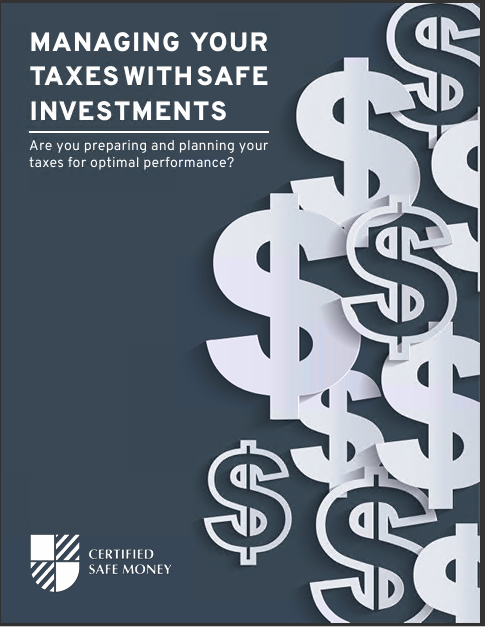The Role of Life Insurance in Retirement Planning
Key Takeaways:
- Life insurance serves as a vital safety net in retirement planning, offering income replacement, debt repayment, and legacy planning benefits.
- By understanding the types of life insurance, evaluating coverage needs, and considering practical factors such as premiums and tax implications, individuals can strategically incorporate life insurance into their retirement portfolios for financial security and peace of mind.
Retirement planning is a multifaceted endeavor that requires careful consideration of various financial tools and strategies. While traditional retirement accounts and investments often take center stage, life insurance is an essential but often overlooked component of a comprehensive retirement plan. In this article, we’ll delve into the critical role that life insurance plays in retirement planning, exploring its importance, types, and practical considerations for integrating it into your retirement portfolio.
The Importance of Life Insurance in Retirement Planning:
Life insurance serves as a vital safety net for individuals and their families, offering protection against unforeseen events that could derail retirement plans. While many associate life insurance solely with providing for loved ones in the event of death, its utility extends far beyond that. Let’s explore why life insurance is indispensable in retirement planning:
- Income Replacement:
- One of the primary functions of life insurance in retirement planning is to replace lost income in the event of the insured’s death. This is particularly crucial for retirees who rely on pension benefits, Social Security, or annuity payments to fund their lifestyle.
- By ensuring that surviving spouses or dependents have financial support to cover living expenses and maintain their standard of living, life insurance can provide invaluable peace of mind during retirement.
- Debt Repayment:
- For retirees carrying outstanding debts such as mortgages, loans, or credit card balances, life insurance can serve as a means to settle these financial obligations. Paying off debts eliminates a significant financial burden for surviving family members and preserves the estate for inheritance purposes.
- By incorporating life insurance into retirement planning, retirees can proactively address debt repayment concerns and safeguard their financial legacy for future generations.
- Legacy Planning:
- Life insurance offers an efficient and tax-effective method for transferring wealth to heirs or charitable organizations upon death. By naming beneficiaries and specifying the distribution of proceeds, retirees can leave a lasting legacy and ensure their loved ones are provided for financially.
- Whether it’s funding grandchildren’s education, supporting charitable causes, or preserving family wealth, life insurance provides retirees with a powerful tool for estate planning and legacy preservation.
Types of Life Insurance:
Understanding the various types of life insurance policies is essential for selecting the most suitable option for retirement planning. While numerous policy variations exist, the two primary categories are term life insurance and permanent life insurance:
- Term Life Insurance:
- Term life insurance provides coverage for a specified period, typically ranging from 10 to 30 years. During the policy term, the insured pays regular premiums in exchange for a death benefit payable to beneficiaries in the event of death.
- Term life insurance is often more affordable than permanent life insurance and is well-suited for temporary needs such as income replacement during the working years or mortgage protection.
- Permanent Life Insurance:
- Permanent life insurance offers lifelong coverage, with benefits that extend beyond death benefit protection. Unlike term life insurance, permanent policies accumulate cash value over time, which can be accessed during the insured’s lifetime.
- Whole life and universal life are common types of permanent life insurance, each offering unique features such as fixed premiums, flexible death benefits, and investment options. Permanent life insurance is ideal for individuals seeking lifelong protection and cash value accumulation for retirement planning purposes.
Incorporating Life Insurance into Your Retirement Portfolio:
Integrating life insurance into your retirement planning strategy requires careful consideration of various factors, including coverage needs, policy duration, affordability, and tax implications. Here’s how to effectively incorporate life insurance into your retirement portfolio:
- Coverage Amount:
- Begin by assessing your financial needs and determining the appropriate amount of life insurance coverage. Consider factors such as income replacement, debt repayment, final expenses, and legacy planning objectives.
- A comprehensive needs analysis can help you determine the optimal coverage amount to protect your loved ones and achieve your retirement goals effectively.
- Policy Duration:
- Choose the right type of life insurance policy and policy duration based on your age, health status, financial goals, and retirement timeline. Term life insurance may be sufficient for short-term needs, while permanent life insurance offers lifelong protection and cash value accumulation.
- Consider factors such as premium affordability, coverage flexibility, and the ability to convert term policies to permanent coverage as your retirement needs evolve.
- Premiums and Affordability:
- Evaluate the affordability of life insurance premiums within the context of your overall retirement budget. Compare quotes from multiple insurance providers to find the best coverage at a competitive price.
- Consider factors such as premium payment options, guaranteed versus non-guaranteed premiums, and potential discounts for healthy lifestyle choices or bundled policies.
- Tax Considerations:
- Understand the tax implications of life insurance, including potential tax-free death benefits for beneficiaries and tax-deferred growth of cash value within permanent life insurance policies. Consult with a tax advisor or financial professional to maximize the tax advantages of life insurance in your retirement plan.
- Consider using life insurance as part of a comprehensive tax planning strategy to minimize estate taxes, provide liquidity for estate settlement expenses, or fund charitable bequests.
- Review and Update:
- Regularly review and update your life insurance coverage to ensure it aligns with your changing financial circumstances, retirement goals, and family needs. Life events such as marriage, birth of children or grandchildren, divorce, or changes in health status may warrant adjustments to your coverage.
- Periodically reassess your coverage needs and consider policy enhancements or modifications to optimize your retirement portfolio and protect your financial future effectively.
Conclusion:
Life insurance plays a pivotal role in retirement planning, providing essential financial protection, income replacement, and legacy planning benefits for individuals and their families. Whether you’re approaching retirement or in the early stages of your career, it’s crucial to recognize the importance of life insurance and incorporate it into your retirement portfolio strategically. By understanding the various types of life insurance, evaluating coverage needs, and considering practical considerations such as premiums, tax implications, and policy flexibility, you can build a comprehensive retirement plan that offers financial security and peace of mind for the future. Consult with a financial advisor or insurance professional to explore life insurance options tailored to your unique needs and objectives, and take proactive steps to safeguard your retirement goals today.
Contact Information:
Email: robertgay@credkeeper.com
Phone: 8777993433













